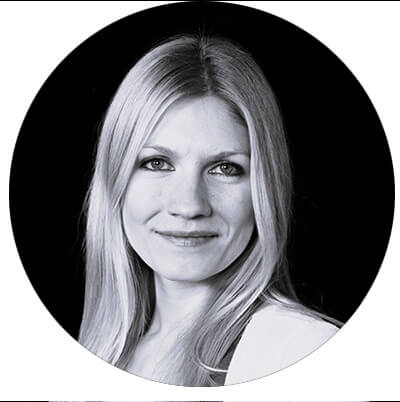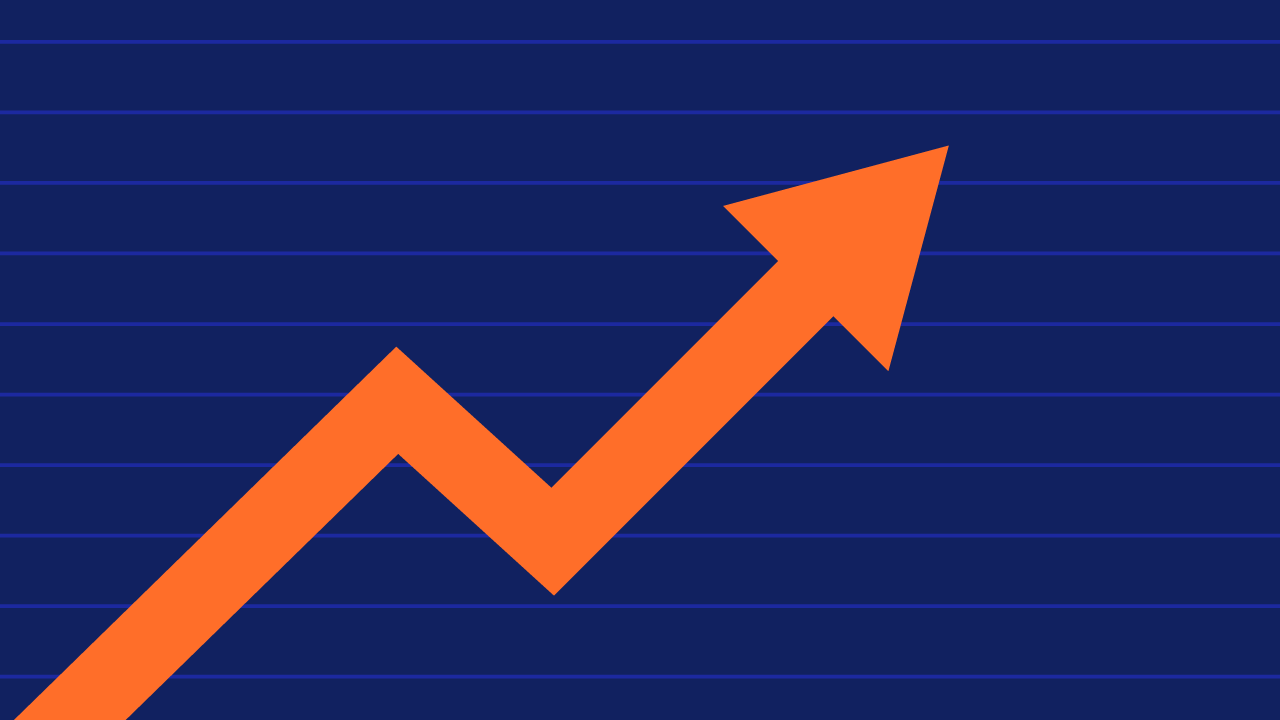The PR and marketing strategies behind winning Super Bowl ads
The Super Bowl is one of the biggest advertising events of the year, with companies spending millions of dollars on 30-second spots in effort to get in front of the largest audience possible, for the ultimate boost in brand awareness and sales. But behind every great Super Bowl commercial – that is, every commercial that truly moves the needle for a brand – is a well thought out, holistic PR, marketing, and communications campaign.
Consider how much much attention Super Bowl commercials are already getting. According to data from CisionOne, mentions of Super Bowl commercials already reached upwards of 3,500 on traditional and social media, with a potential audience reach of 1.8 billion, well before the actual event on February 11.

Those conversations, that build-up, are the result of strategic PR, marketing, and communications efforts.
How do we know? Let’s look at Super Bowl campaigns leading brands employ in hopes of leaving a lasting memory during American television’ most-watched event – whether they’re advertising in the game or not.
No Super Bowl ad? No problem. Marketing tactics to leverage the big game’s popularity
You don’t have to pay millions of dollars for a 30-second ad spot during Sunday’s game to leverage the excitement around the event and gain exposure for your brand. The key is finding a relevant tie-in to the Super Bowl that connects the dots between the event and your brand.
Consider a few of the clever ways brands are leveraging game day fever with their own, unique Super Bowl promotions – no commercial needed.
Offer a game day-themed special
One of the most straightforward Super Bowl marketing approaches is to offer a discount for a product or a service that ties back to the game. Examples include:
- Aldi: The nationwide grocery chain is offering up its own “winning quarter back” (do you get it???) by giving 25% off game day “must-haves” like pizza, wings, dips, and more.
- B&H: B&H Photo is offering discounts for electronics, such as that other game day must-have: big screen TVs.
Create an experience fans will love
Why should Super Bowl ticket holders have all the fun? Creating localized experiences that combine game day themes with something unique your brand has to offer can be great for generating earned media and brand recognition. Examples include:
- The Paley Museum: The Paley Museum is launching an exhibit to coincide with the Super Bowl and tap into audiences’ love of (and nostalgia for) its famous commercials.
- Maxim: In partnership with Vivid Seats, Maxim will host the ultimate tailgating party the day before the game, taking advantage of its locality in the heart of Las Vegas, where the game will take place.
Launch a contest or giveaway that aligns with key game moments
Discounts are great but the chance to win free stuff can be even more enticing, and tying it to key game milestones (say the first touchdown or after a certain number of points were scored) can be extra beneficial for your brand. You can capitalize on those moments when online conversations tend to spike. Examples include:
- Supercuts: The discount hair salon chain is offering free haircuts to those who register ahead of time on their campaign-specific website – but only if the combined score reaches 75.
- Felix Cat Insurance: Felix Cat Insurance has created a “Felines and Football” contest with a tie back to the world’s most famous football fan/cat lover.
- Jif: The brand beloved by choosey mom’s has launched a campaign to “save the celery” (that often goes uneaten when accompanying chicken wing platters), which encourages consumers to sign up for the chance to win free peanut butter.
Share original research
The Super Bowl is as much for sports fans as trivia lovers: Listen to any amount of football commentary and you’ll be bombarded with all kinds of stats and trivia relating the players, the game, even the weather conditions. So if you have fun facts and findings that connect with your brand with the Super Bowl, you have a marketing opportunity. Examples include:
- National Chicken Council: Wondering how much chicken Americans consume during the Super Bowl? Now you don’t have to wonder, thanks to research from The National Chicken Council.
- Zillow: The real estate company recently released the results of a survey asking audiences which NFL personality they’d most want for a neighbor.
Announce a new product or service that holds relevance for fans
Announcing a new or enhanced product “just in time for the Big Game” is an effortless way to associate your brand with the Super Bowl and get in on the conversation. Examples incllude:
- TCHO: Capitalizing on sports’ fans love of nachos, TCHO, a California-based chocolate company, timed the release of their limited edition “CHOCO NATCHOS” to coincide with Super Bowl Sunday.
- Avocados from Mexico: Avocados from Mexico found a way to bring the artificial intelligence craze into their Super Bowl promotion, launching their customized, AI-powered recipe generator just ahead of game day.
As the above brands and many like them illustrate, there are myriad opportunities to capitalize on the popularity of the biggest night in sports without a Super Bowl ad spot.
Marketing best practices from the brands behind the Super Bowl ads

Today, brands that advertise during the Super Bowl do far more than simply putting out a 30-second TV spot. They create entire marketing and PR campaigns that integrate paid, owned, shared, and earned media. Consider some of these tried-and-true tactics that you can use to amplify your Super Bowl marketing (or any event marketing) campaigns.
Paid Media Tools and Tactics: Creating a 30-second ad and purchasing a spot during the game is the most obvious way to get eyes on your brand – but also the most expensive. Outside of a commercial, consider opportunities to sponsor pre- or post-game coverage or segments. Another way to gain added exposure is to partner with brands that will also feature prominently in the Super Bowl to enjoy some of their time in the spotlight. Use a prominent newswire distribution service to send a press release promoting your campaign.
Earned Media Tools and Tactics: Curate a relevant list of media contacts to pitch your Super Bowl-related story to. Offer up your organization’s executives or other subject matter experts for interviews on local, regional or national news, sports or entertainment outlets. Offer exclusives or sneak peeks of your content to increase your pitch’s intrigue.
Owned Media Tools and Tactics: Your owned channels let you have full creative control over your Super Bowl campaign messaging and distribution. Utilize everything from your website, press room, or a customized microsite to your brand’s social media channels, email newsletter, podcast and company app to share teaser content or information about how audiences can be a part of the action. Or consider questions audiences might search during the game that are relevant to your brand’s niche, and create content around it to capitalize on online traffic spikes.
Shared Media Tools and Tactics: Shared media refers to content that is developed collaboratively with partners and shared across multiple sites and channels to amplify your paid and owned efforts. The key is to come up with creative concepts that media, influencers, and everyday users will voluntarily want to share across their own networks. Consider offering rewards or incentives to brand advocates and everyday audiences for sharing your content and custom hashtags. (See below for more creative ways to amplify your Super Bowl campaign.)
Super Bowl Marketing 101: Identify your MVPs
There’s a reason celebrity spokespeople are so prevalent in Super Bowl ads: They work. But beyond that, the brands that see the most success are the ones who choose celebrities who make sense for their brand.
Consider Dunkin’ Donuts’ choice to partner with actor Ben Affleck: Beyond being just a famous face, Affleck has often been photographed carrying a cup of the brand’s coffee. Dunkin’ Donuts cleverly decided to lean into this fandom with a humorous ad that portrayed Affleck working in one location and filming customers’ reactions.
The result? Thousands of media items discussing the spot, with media coverage volume peaking the day after the game, and potential audience reach 1.2 billion, according to CisionOne insights. Our platform also found that Dunkin’ Donuts got more media attention than all other brands whose commercial featured a celebrity.
Of course, not every brand has the budget to partner with a famous celebrity. But not every brand needs that, either. (And as we know from the 2024 Global Comms Report, more and more brands are finding value in non-celebrity influencers.) Consider going a less traditional route in who you team up with to amplify your brand’s story:
Align with influencers
More brands are collaborating with social media influencers and micro-influencers to help promote their Super Bowl ads – these smaller scale influencers may have smaller fan bases, but those fan bases are devoted to those influencers and trust their opinions. Consider Dove’s decision to partner with Kylie Kelce to bring awareness to Dove’s Body Confident Sport initiative, which aligns with the brand’s values and ties back to the Super Bowl.
Activate your brand ambassadors
Don’t underestimate the power of your internal employees and other brand advocates to help spread the word about your campaign and build excitement. Start by encouraging employees to share your campaign on their social media accounts leading up to the event. In fact, make it easy for them by leveraging employee advocacy software like Sociuu or PostBeyond or providing pre-written messaging they can access via internal communications channels.
Get your executive team in the game
Don’t forget that executives are brand ambassadors too, so work with them to craft messages to share with their networks. Pitch them for bylined articles or interview on TV, radio, podcasts, and online publication to talk about the purpose behind the commercial, the strategy, or the creative details.
Get the fans going with pre-event outreach
These days, you often don’t have to wait until game day to know who’s going to be advertising during the event, and what that ad will look like. Weeks before the Super Bowl, savvy PR teams are already at work building excitement and anticipation of their commercials and campaigns. Here are just a few of those tactics you can apply to any event-related PR campaigns:
Put out a press release
As noted in the 2023 State of the Media Report, press releases remain the number one source journalists look to for content to fuel their reporting. Using a distribution service like PRNewswire can help get your press release in front of a wide audience of media influencers covering the big game.
Make friends with the media
Dedicated outreach to journalists and influencers will be key to generating earned media for your campaign. Take time to identify journalists whose previous work indicates that they would be interested in covering your campaign. Does it have relevance or special meaning for their audience? Is there a unique angle no one else is covering? Can you offer an exclusive? These are just a few of the questions to ask yourself before pitching journalists with your story.
(For more insight into the pitching strategies that get results, check out our tip sheet: How to Win Over Journalist and Improve Earned Media Coverage)
Activate your ambassadors
Weeks ahead of the event, coordinate with your “MVPs” - your influencer partners, employees, executives, and other brand ambassadors – to start leaving hints on social media, online forums, or during networking events about what they can expect during the event. Establish a hashtag and supply them with talking points to encourage sharing and keep the conversation going.
Create teaser videos
Creating a “teaser” video of your commercial can build anticipation and buzz around your ad. Your teaser could include anything from a short clip from the actual ad or behind-the-scenes footage of the making of the ad – much like this video from Uber Eats, which teases the company’s ad and cleverly spoofs Netflix’s recent Beckham documentary.
Bonus: These teasers can also give your campaign extra life – and keep your brand top of mind – long after the event has ended.
Don’t get lost in the crowd: Creative ways to make your Super Bowl PR campaign stand out
With so many brands competing for media attention, before, during and after the Super Bowl, how can PR teams ensure their story doesn’t get lost in the crowd? Consider some tried-and-true tactics that have been successful in recent years.
Tap into your audience’s emotions
Every strategic communicator knows that the key to effective storytelling lies in the ability to resonate with audiences on an emotional level. Never is that tactic put more into practice than at the Super Bowl. And while it’s common to see Super Bowl ads that tickle viewers’ funny bones or tug at their heartstrings, a more recent trend among brands is hoping to evoke feelings of nostalgia with audiences. Last year, for example, PopCorners brought the stars of Breaking Bad together for their “Break Into Something Good” campaign, Verizon’s ode to the movie musical Grease, or Alicia Silverstone reprising her role from Clueless for Rakuten.
Create a winning PR campaign (literally)
Creating a contest or offering up a prize is almost always a sure bet for brands. But these days, brands are getting even more creative to encourage user-generated content that drives even more eyeballs to their campaign. The tactic worked beautifully for Doritos last year, whose #DoritosTriangleTryout contest went viral.
Commit to a cause
Use the event as a time to shed light on a cause that aligns with your brand and encourage others to get behind it. Use hashtags to draw attention to it and partner with a spokesperson who audiences will respond to. Dove, for example, is using their Super Bowl spot (and athlete Kyle Kelce, as mentioned above) to draw attention to their #KeepHerConfident campaign.
Create a national holiday
Because why not? Sundae cone brand Drumstick is enlisting the help of comedian Eric Andre and Change.org to help make #DrumstickMonday happen; meanwhile, California Almonds, with the support of Deion Sanders, has already declared that day “National Recover Day."
Don’t be afraid to get a little weird (but stay true to your brand)
What do M&M’s have to do with football’s ultimate event? Not much until you consider their “Almost Champions Ring of Comfort,” made of real M&M’s to provide comfort to the “almost champions” of Super Bowls past and present.
Remember the final key to standing out from the crowd: Getting the timing right. Taking note of the ebbs and flows of social and earned media coverage via media monitoring can help you determine the sweet spot for announcing your campaign in order to stand out from other brands making similar announcements.
Watch the replays and set up a game plan for next year
Monitoring the coverage of your campaign before, during, and after the event can provide real-time insight into how your campaign is being received (enabling you to pivot in the moment and capitalize on those who are talking about your brand) as well as inform the approach you take for future campaigns.
For example, you can use CisionOne’s all-in-one media intelligence platform to track brand mentions and hashtags to understand who’s talking about your campaign, what they’re saying, and the sentiment it’s generating among audiences. You can also home in on the outlets and journalists who might be interested in covering your campaign story, create a curated media list to reach out to automatically, with customized messaging for more personalized media outreach.
Next steps: Start putting these PR strategies into practice
Find out more about how CisionOne can help you plan and monitor your event strategy. Explore the platform or make time to speak with one of our experts.









